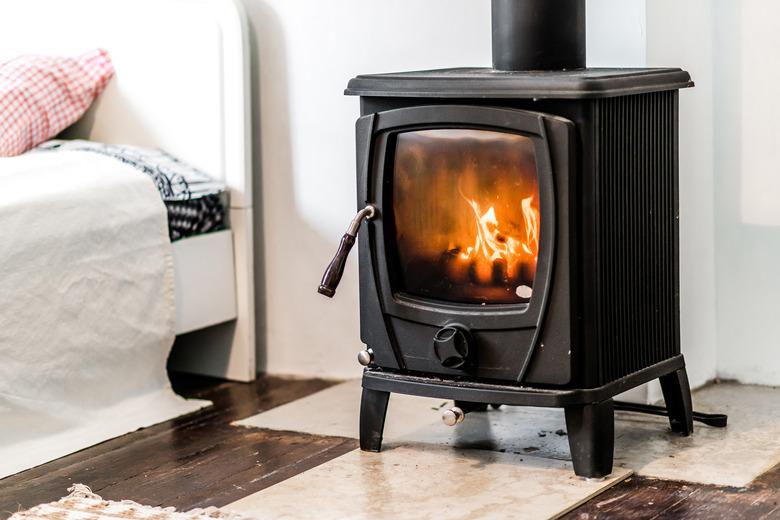How To Use A Wood Stove Thermometer
Is that fire burning in your wood stove a "good" fire? Take all the guesswork out of analyzing your wood stove's performance by using a wood stove thermometer. These typically have a convenient color-coded display to help you understand whether your fire is too cold, too hot or just right. By learning how to adjust the wood stove accordingly, you can achieve a more efficient burn and allow the fuel to last longer.
Before you make this purchase, you'll need to know whether you have a single-wall or double-wall wood stove since not all styles will work on all types of wood stoves.
Types of Wood Stove Thermometers
Single-wall wood stoves are compatible with two styles of magnetized thermometers: the stove top thermometer vs. the stove pipe thermometer. As their names imply, the major difference between these two thermometers is where they read the temperature. A stove top thermometer sits on top of the stove itself, and a magnet ensures it maintains a good connection.
A stove pipe thermometer sticks to the stove pipe via a magnet and reads the temperature of the air passing through the pipe. Install it on the pipe approximately 12 inches above the stove top. Do not place a thermometer intended to read a stove pipe temperature on top of your stove (or vice versa) and expect the color-coded zones to remain accurate. The air that enters the pipe will always be slightly cooler than the air directly around the burning fuel, and according to Midwest Hearth, wood stove thermometers are calibrated accordingly to quickly show you the optimal temperature range based on where the reading is taken.
Both stove top and stove pipe thermometers are only suitable for single-wall stoves. The extra wall in double-wall stoves provides insulation that skews the readings on these thermometers. For an accurate reading on a double-wall stove, use a stove pipe probe thermometer. This inserts through a drilled hole in the pipe to sit directly in the air flowing up through the pipe.
Reading a Wood Stove Thermometer
Wood stove thermometers typically have an analog display, meaning you'll need to look at the position of the arm to identify the fire's temperature. They also tend to show both Fahrenheit and Celsius units, so take care to look at the correct set of numbers based on your personal preferences.
When reading from a stove top thermometer, you'll want to see the arm remaining in the 400 to 650 degrees Fahrenheit range. When reading a stove pipe surface or probe thermometer, the optimal temperature range is 230 to 475 degrees Fahrenheit. Temperature readings in these optimal ranges indicate that the fuel is burning efficiently.
If the temperature drops below the optimal range, the fire isn't burning hot enough, and creosote will build up at a faster rate. If the temperature rises above the optimal range, the fuel is being consumed too fast, and the integrity of the stove could be compromised.
Adjusting Your Wood Stove Accordingly
Having trouble reaching or staying in the optimal zone? Airflow is a common culprit. If the fire isn't burning well, check that enough air is entering the stove. Open the damper to start and consider opening a nearby window just in case your house is airtight.
On the other hand, if the fire is burning too hot, there's likely too much air flowing into the stove. Is the stove door closed all the way? Adjust the damper to allow less air into the stove.
The type and amount of wood being used, the ash buildup in the stove and even the arrangement of wood can also affect a wood stove's efficiency. Start by consulting your stove's owner's manual for recommended practices.
